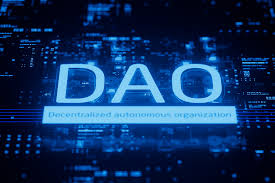The Role of Blockchain in Modern Financial Systems

1. Introduction-What is a blockchain ?
The blockchain is like a digital notebook that everyone can see but no one can discreetly change.
Each page is called a block .
The pages are connected together in a series .
Once something is written, it stays there forever.
In modern finance, this notebook is used to keep track of money, trade and contracts safely and transparently.
2. Why blockchain matters in finance
Before the blockchain, financial systems relied on banks, brokers and clearing houses to verify and record transactions.
With blockchain:
Transactions between people can be directly verified.
The record is visible to everyone on the network .
Trust is built through technology, not just institutions .
3. Key features that help finance
a) transparency
All transactions are publicly recorded on the blockchain, making it easier to check for errors or fraud.
B) security
Transactions are locked using robust cryptography, making it much harder for hackers to convert data.
C) speed
International payments that once took days can take minutes.
D) lower costs
Without intermediaries such as banks or payment processors, fees can be reduced.
4. Real use in modern financial systems
a) cross-border payments
Companies such as Ripple use blockchain to move money between countries quickly and cheaply.
B) smart contracts
These are contracts that run automatically when conditions are met .
Example: if you pay for a product, the contract automatically sends it without human approval .
c) digital currencies
Some governments are creating central bank digital currencies (CBDCs) that act like blockchain-based National money.
d) trade and settlements
Blockchain stocks or bonds can settle trading almost immediately, rather than taking the day off.
5. How blockchain improves confidence
In traditional finance, trust comes from large institutions such as banks.
In blockchain-based finance, confidence comes:
Everyone is looking at the same transaction history.
Rules created in the system that cannot be changed in secret .
Many computers are checking transactions at the same time.
6. Adoption challenges
Although the blockchain is powerful there are challenges:
Rules and regulations-many countries are still figuring out how to manage a blockchain system.
Energy use-some blockchain methods (such as bitcoin’s proof of work) use a lot of electricity.
Scams-fake plans and fraud can still happen.
Learning curve-people need time to understand how it works.
7. The future of blockchain in finance
Experts believe blockchain will:
Make sending money around the world as easy as sending an email.
Create financial systems that run 24/7 without closing .
Allow anyone with internet access to join the global economy .
Help governments track costs more effectively .
8. Result
The blockchain is changing how the modern financial world works .
It takes the core function of banks — recording and verifying transactions-and it does so through a shared, secure digital system.
If used wisely, it can make finance faster, cheaper and better for everyone .







